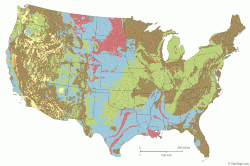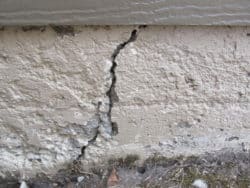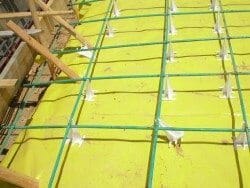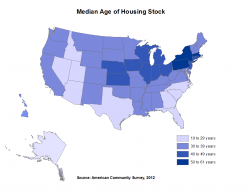Gaps At Bottom of Garage Door Indicates That Slab Has Cracked Or Moved
Home » Structural »
If the garage door has a gap at the bottom area, then the concrete slab may have structurally moved. Often there will be a gap at each side or at only one side and the center of the garage door will be down against the concrete.
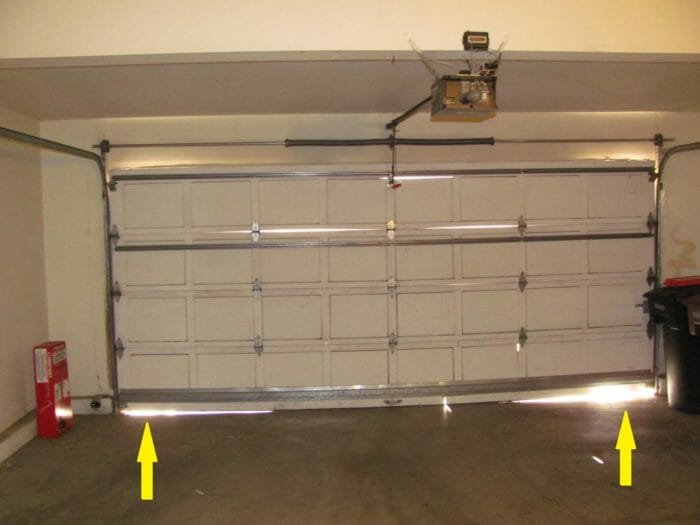
When the concrete garage floor is first poured, the concrete at the bottom of the garage door is normally level. Then over time the homes foundation settles a little or if there is expansive soils and moisture gets under the slab, the soil expands and pushes up on the slab.
Since there is weight holding the concrete areas at the ends of the garage down, but none in the center area; thus in the center area of the garage door the concrete gets pushed up. This creates a gap at the two corner areas. The gaps may be ½ to 1 inch up without much concern by the builder or many contractors. If it is two or three inches, then more attention should be paid to the foundation and the levelness of the floors in the house.
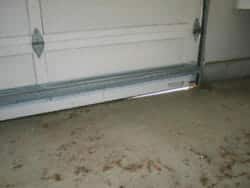
Gap only at one corner
Many homes may have a gap at one side of the garage door, but none at the other side. Again, the most probably cause goes back to soil movement. Should there only be a gap at one side of a garage door and not at the other, it will often be at the side of the garage door that is closet to a corner of the house, for this is where more movement may occur. Corner areas generally have less weight on the footing or slab, thus are more apt to shift or move.
A side effect of the slab movement is cracking
A side effect of the concrete garage slab moving is that the concrete floor will usually crack. Many builders know this, so they put controls joints into the floor, so the concrete will crack at the control joints. However, concrete is dumb, so it doesn’t always crack at the control joints. Also, builders seldom ever get the control joints installed properly. Even with control joints, there will be gaps; for the control joints only affects the cracking, not the settling or upward pressures on the concrete.
One of the most common places to find a control joint in a garage is near the center of the garage or perpendicular to the center area of the garage door. Where there are expansive soils and they are pushing upward, the concrete slab will lift where it is the weakest, which in many cases is at the control joint
Bottom Line
Gaps at the bottom of garage doors are very common. Garage door manufactures realize this, so many of them put a rubber seal on the bottom of the garage door. This helps keep rodents and rain out, as well as, adjust for the unevenness of the concrete. As part of your home maintenance program, check the rubber seals at the bottom of your garage door.
Since poor drainage near a homes foundation is one of the major causes for foundations and slabs to shift or move, it is important to check to see if your drainage is good. If it’s not, then this may a possible reason for your garage slab to move, resulting in the gaps at the garage door bottom.
